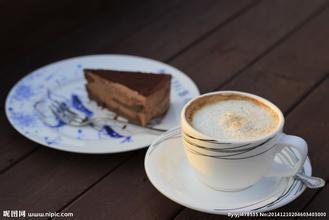Flavor and taste of coffee beans in Laos introduction to the varieties of grinding scale by regional treatment method
Laos coffee beans
The production of coffee in Laos is already small, and Arabica sells almost all its own coffee to France, a relationship that has not changed since colonial times. Obviously, after the French left, the Laotians didn't know how to sell coffee. Robusta coffee is exported, sold to Thailand, went to Nestle, maybe this is why Thai Nestle coffee tastes so good. Basong does not have many large plantations, most small farmers produce, although there is the best coffee, but the tourism industry is still in its infancy, if you are a coffee enthusiast, you can also visit the local village. November to January is the harvest time for Arabica coffee, while February to March is Robsta's. If it's not that crazy, go to Vientiane or Luang Prabang cafes and carefully choose first-class local coffee. Remember to choose Arabica coffee varieties. Laotians also like to pour coffee into a glass mixed with condensed milk, and then have another cup of green tea.
Coffee is one of the most popular beverages in human society, and it is also an important cash crop. It has the second highest futures trade quota in the world (second only to oil). In European and American culture, the cafe is not only a traditional social place, but also a collection and distribution center of art and knowledge.
Coffee trees are native to the subtropical regions of Africa and some islands in southern Asia, with many varieties. Each variety is related to specific climatic conditions and a certain altitude. The wild coffee tree is an evergreen shrub, 3 to 3.5 meters high, with small white flowers on its branches and a jasmine fragrance. The fruit is 1.5 to 1.8 cm long, red and similar in size to cherries. There are two adjacent seeds, namely coffee beans, each with endocarp and epicarp. Coffee beans are roasted and then ground into coffee powder to make coffee.
According to Roth de Neroy (1613-1707), a Roman linguist, around the sixth century, when an Arab shepherd drove sheep to the Isobian prairie for grazing, he felt very excited and excited to see each goat. Later, after careful observation, it was found that these sheep were excited after eating some kind of red fruit, and the shepherd tasted some curiously. He found these fruits very sweet and delicious, and he felt very refreshed after eating them. From then on, he often drove the sheep to eat this delicious fruit (which can make up for the way shepherds and goats dance together. ).

Important Notice :
前街咖啡 FrontStreet Coffee has moved to new addredd:
FrontStreet Coffee Address: 315,Donghua East Road,GuangZhou
Tel:020 38364473
- Prev

Where does Africa produce Blue Mountain Coffee?-which country has grown Yunnan, China?
Where does Africa produce Blue Mountain Coffee-which country has carefully cultivated and harvested in Yunnan, China, on steep and high-altitude mountains, all Jamaican Blue Mountain Coffee is ground, tasted and distributed by the Jamaica Industry Association. The coffee in the cup tastes very clean, and it is one of the sweetest coffee in the world. The taste has been described by Jim Reynolds in Peet coffee and tea.
- Next

Low-altitude coffee beans-an introduction to the lowest coffee-growing continent in the world
Low-altitude coffee beans-the lowest coffee-growing continent in the world. Coffee from this region is also washed with water: processed coffee beans, including Ethiopia and Kenya. Ethiopia is the place where humans first encountered coffee magic, and drinking coffee has been a part of Ethiopian life for centuries. A well-designed coffee ceremony
Related
- What brand of black coffee is the most authentic and delicious? what are the characteristics of the flavor of the authentic Rose Summer Black Coffee?
- Introduction to the principle and characteristics of the correct use of mocha pot A detailed course of mocha pot brewing coffee is described in five steps.
- Which is better, decaf or regular coffee? how is decaf made?
- How much is a bag of four cat coffee?
- How about four Cat Coffee or Nestle Coffee? why is it a cheap scam?
- Which is better, Yunnan four Cats Coffee or Nestle Coffee? How about cat coffee? is it a fake scam? why is it so cheap?
- How about Cat Coffee? what grade is a hoax? which instant coffee tastes better, four Cat Coffee, Nestle Coffee or G7 coffee?
- Process flow chart of coffee making-Starbucks coffee making process what coffee tastes good at Starbucks
- The top ten best coffee beans in the world Rose summer coffee or Tanzanian coffee tastes good
- Yunnan four cat coffee is good to drink?_four cat coffee is a big brand? four cat blue mountain coffee is fake?

